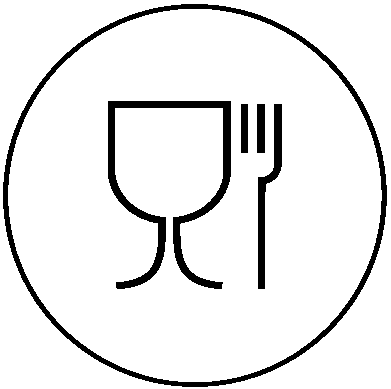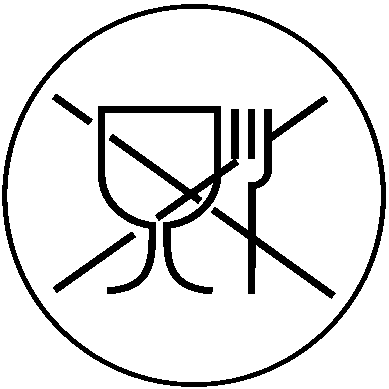The requirement for labeling of goods imported into the territory of the EAC
If for the importation into the customs territory of the Customs Union of products (goods) in respect of which mandatory requirements are established within the Customs Union, approved by the Decision of the BoardECE No. 294 of December 25, 2012, established the need to submit to the customs authorities during the customs declaration of imported goods documents on the assessment of their compliance with mandatory requirements within the Union or information about such documents.
If yourproductA Declaration of Conformity is required orCertificate of Conformitythen you need to familiarize yourself with this information.
In accordance with the lawThe EAEUand the legislation of the Russian Federation on customs regulationcustoms authoritiesensure compliance with prohibitions and restrictions, which include technical regulation measures, with respect to goods imported into the Russian Federation.
According to paragraphs 1 and 2 of Article 53 of the EAEU Treaty of 29.05.2014, products put into circulation on the territory of the EAEU must be safe. Products in respect of which entered into forcetechnical regulations, is put into circulation on the territory of the EAEU, provided that it has passed the necessary conformity assessment procedures established by the technical regulations.
In accordance with paragraph 6 of the Protocol on Technical Regulation within the EAEU (Annex No. 9 to the EAEU Treaty), it is established that products that meet the requirements of technical regulations applicable to these products and have passed the conformity assessment procedures established by technical regulations are subject to mandatory labeling with a single product circulation mark on the EAEU market and according to the Procedure for applying a single the mark of circulation of products on the EAEU market, approved byBy the decision of the Customs Union Commission No. 711 of 15.07.2011. , it is marked with it before the release of products into circulation on the EAEU market.
It is important to understand that the information contained on the label must fully correspond to the information stated in the goods declaration and in the technical documentation attached to the product.
The list of general requirements was listed in Government Decree No. 1037 of 15.08.1997 . "On measures to ensure the availability of information in Russian on non-food products imported into the territory of the Russian Federation", although it became invalid on 13.03.2018 in accordance with the decree of the Government of the Russian Federation No. 246.
Information about non-food products, taking into account their type and characteristics, should contain the following information in Russian:
- product name;
- the name of the country, the manufacturer (the name of the company can be indicated by letters of the Latin alphabet);
- purpose (scope of use), main properties and characteristics;
- rules and conditions for effective and safe use;
- other information about goods in accordance with the legislation of the Russian Federation, the requirements of state standards for certain types of non-food products and the rules for their sale.
The information must be placed on the packaging or label of the product, set out in the technical (operational) documentation attached to the product, leaflet inserts for each unit of the product or in any other way accepted for certain types of goods.
The most important thing on the label is the name of the product. It should include the actual name of the product in Russian and the article or model, but this is not all the information that should be present on the label.
The Customs Union has a number of technical regulations that impose requirements depending on the type of goods. So, for example, there is a separate technical regulation (TRTS) 005/2011 "On packaging safety", and it establishes that the packaging must be marked with a characteristicthe "glass-fork" icon, if the container is intended for food products, andcrossed-out icon "glass-fork", if not for food.
In addition, different regulations additionally establish requirements for where exactly the marking should be applied. There are two main requirements –markingit must be on each unit of the product and on the packaging container as a whole. Usually on the box. But some products also have their own nuances.
As a rule, labels are approved for products that are subject to the requirements of the technical regulations of the Customs Union at the stage of registration of permits: declaration of conformity TR CU or certificate of conformity TR CU. The certification body checks the label and indicates how it should be changed or supplemented. Only after that, its sample can be sent to the seller for a sticker oncargoand boxes.
In case of detection of absenceEAC markingsthe customs authority will most likely want to initiate an administrative offense case under Article 16.3 of the Administrative Code of the Russian Federation. "Non-compliance with prohibitions and (or) restrictions on the import of goods into the customs territory of the EAEU or into the Russian Federation and (or) export of goods from the customs territory of the EAEU or from the Russian Federation."
This article assumes a fine of 50 to 300 thousand rubles and the possibility of confiscation of goods. On average, an AP case is conducted for two to four months, then a decision is made on the AP case, after which it will be necessary to pay a fine. All this time the cargo will be in a warehouse of responsible storage. After the fine is paid, the participant hasForeign economic activitythere are two options: either send the goods tore-export, or transport the goods toCustoms warehouseand mark it there, and then re-submit the declaration to customs. Both options lead to serious additional financial costs and expenses.
The shipment of the cargo should always be preceded by the label approval process. Usually, the importer sends its sample to the seller, and the seller then attaches the label to the goods and boxes before shipping.
AppropriateDecision of the Customs Union Commission No. 711it was adopted back in 2011, but with special vigilance, customs took up its execution relatively recently. Participants of foreign economic activity often come across the fact that there is no mandatory EAC marking on the labels of goods that are subject to declaration of conformity, or this marking is present on the label pasted on the box, but is not on the product. Sometimes the sign on the label itself looks incorrect – it is strongly elongated horizontally or vertically, which is also a violation of the law.
According to paragraph 2 of the Protocol on Technical Regulation within the EAEU (Annex No. 9 to the EAEU Treaty), the release of products into circulation is the supply or import of products for the purpose of its distribution on the territory of the Eurasian Economic Union. According toThe EAEU TC import of goods into the customs territory of the Union- performing actions related to crossing the customs border, as a result of which goods arrived at the customs territory of the EAEU before their release by customs authorities.
The absence of a single circulation mark on the accompanying documents, goods or packaging may indicate the risk of non-compliance with technical regulation measures related to the submission of invalid documents (not related to the goods) to the customs authorities.
When confirming such risks during the application of customs control forms, and measures to ensure them, other than checking the presence of a sign of treatment, administrative liability is provided for in relation to participants of foreign economic activity under the article16.3 Administrative Code of the Russian Federation.
Please note that this responsibility only for the absence of a sign of address, established by part 3 of Article 16.2 of the Administrative Code of the Russian Federation, cannot occur.
There is a letter from the Federal Customs Service of Russia No. 01-11/50898 dated 15.05.2018 on the initiation of cases of administrative offenses in connection with non-compliance with technical regulation measures written by Colonel-General of the Customs Service R.V. Davydov, it explains the situations regarding the absence of the EAC mark and incorrect labeling of goods.
The rules of the game are constantly changing, so before starting it, we advise you to contactfor advice in order not to end up leaving the game earlier than others.
- Views: 40706
- Instructions for securing dangerous cargo in a container
- Rules for the transportation of dangerous goods
- Zeroing of duty rates - decision of the EEC Board No. 63 of 12.04.2022
- Resolution Government of the Russian Federation No. 353 of 12.03.2022
- Letter of the Federal Customs Service No. 06-42/59089 dated 02.12.2011
- Decision of the EEC Council No. 37 of 17.03.2022
- HS codes changed from 01.01.2022






